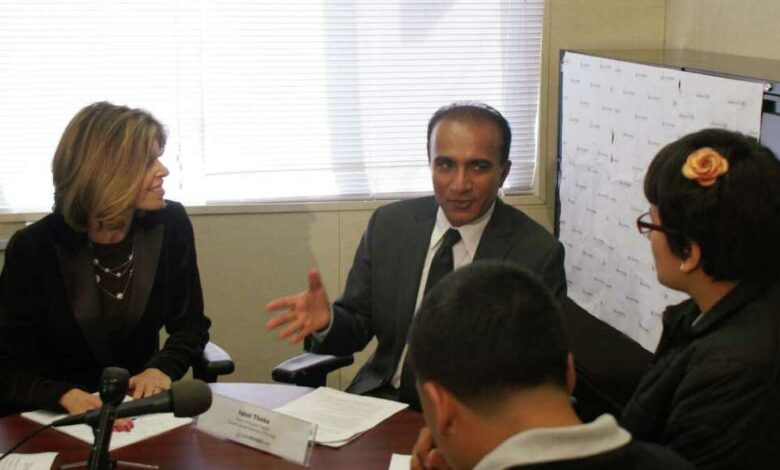Emma Argues with Principal Figgins: A Confrontational Encounter

In educational dynamics, disagreements between faculty and administration are not uncommon. However, when these disagreements escalate into confrontations, they can become pivotal moments, shaping the ethos and direction of an institution. One such incident occurred between Emma, a dedicated and forthright teacher, and Principal Figgins, a seasoned and firm administrator. This article delves into the nuances of their argument, exploring the underlying issues, the immediate impact, and the long-term implications for their school.
The Catalyst for Confrontation
The confrontation between Emma and Principal Figgins did not occur in a vacuum. It was the culmination of long-standing disagreements over school policies and Emma’s growing frustration with what she perceived as an autocratic approach by Principal Figgins. Emma, known for her progressive teaching methods and advocacy for student-centred learning, had been increasingly vocal about her concerns. On the other hand, Principal Figgins was a stickler for rules and traditional methods, prioritizing discipline and order over what he deemed experimental teaching approaches.
The immediate cause of their argument was a new policy implemented by Principal Figgins, which Emma felt severely restricted her ability to teach her students effectively. This policy, which mandated strict adherence to a standardized curriculum and teaching methods, directly opposed Emma’s belief in a more flexible and personalized approach to education. Emma saw this as a critical impediment to her students’ learning and development and confronted Principal Figgins.
The Clash of Philosophies
The argument between Emma and Principal Figgins was more than a mere difference of opinion; it was a clash of educational philosophies. Emma argued passionately for the importance of adapting teaching methods to meet the diverse needs of students. She believed that education should be a dynamic process responsive to the changing world and the unique qualities of each student. Her approach was grounded in recent educational research that supported more flexible and student-centred learning environments.
Principal Figgins, however, countered with the argument that a standardized approach was essential for maintaining quality and consistency across the educational spectrum. He stressed the importance of measurable outcomes and the need to prepare students to succeed in a competitive world. His stance was rooted in a more traditional view of education, where uniformity and discipline were vital to maintaining order and achieving academic success.

The Impact of the Argument
The argument between Emma and Principal Figgins was intense and significantly impacted the school community. Teachers and students were drawn into the debate, some siding with Emma’s progressive views while others supported Principal Figgins’ traditional approach. The confrontation brought to the forefront the tensions between innovation and tradition in education, sparking discussions and debates throughout the school.
In the short term, the argument led to a strained atmosphere within the school, with heightened emotions and a clear division among staff members. However, it also initiated a much-needed dialogue about educational practices and policies. Teachers began to share their perspectives more openly, and students became more engaged in discussions about their learning experiences.
Long-term Implications and Reflections
The long-term implications of Emma’s argument with Principal Figgins were profound. While the immediate aftermath was challenging, it eventually led to positive changes within the school. The administration, recognizing the need for a more inclusive approach to policy-making, began to involve teachers in decision-making processes. This led to a more collaborative environment, where the expertise and experiences of educators were valued and considered in shaping school policies.
Emma’s courage in standing up for her beliefs inspired other teachers to advocate for their educational philosophies. This fostered a culture of innovation and experimentation, where diverse teaching methods were explored and implemented. The school gradually became a model for progressive education, blending traditional and innovative approaches to create a more adaptable and student-centred learning environment.
The Precipitating Incident: Dissecting the Trigger for the Argument
The spark ignited the argument between Emma and Principal Figgins was a specific incident involving a student’s unique learning needs. Emma had adapted her teaching style to accommodate this student, but Principal Figgins insisted on adhering to the standard curriculum, citing policy and consistency. This incident highlighted the tension between individualized student care and a one-size-fits-all approach to education. Emma saw this as a blatant disregard for student welfare, while Principal Figgins viewed it as upholding educational standards. This incident set the stage for their confrontation and symbolized the broader conflict between innovation and tradition within the education system.

The Role of School Culture in the Argument
School culture played a significant role in the argument between Emma and Principal Figgins. The school’s ethos, which had traditionally leaned towards conservative educational practices, was challenged by new teaching methods and ideologies. Emma represented this shift towards a more progressive, student-centered approach. The confrontation brought to the surface underlying tensions within the school’s culture, revealing a divide between developed and traditional educators. This divide had implications for how students were taught and how teachers were expected to conform to certain educational norms, influencing the broader dynamics of the school community.
Student Reactions and Involvement
Students were not passive observers in the conflict between Emma and Principal Figgins. Many were directly affected by the policies at the heart of the dispute and had strong opinions. Some students found a voice in Emma’s advocacy, feeling empowered by her support for diverse learning styles. Others, more accustomed to the traditional methods, aligned with Principal Figgins’ stance. This involvement of students added a crucial dimension to the argument, highlighting the direct impact of educational policies on the student body and emphasizing the importance of considering student perspectives in academic decisions.
Administrative Response and Policy Reevaluation
Following the argument, the school administration was forced to reassess its policies and approach to conflict resolution. This reevaluation involved not only Principal Figgins and Emma but also other stakeholders in the school, including fellow teachers, parents, and members of the school board. The need for a more nuanced policy that could accommodate diverse teaching styles while maintaining a standard of excellence became apparent. This period of introspection and discussion was pivotal in moving the school towards a more inclusive and adaptive educational model.

Broader Educational Implications
The confrontation between Emma and Principal Figgins was not an isolated incident; it reflected broader debates in education. This incident was a microcosm of the ongoing struggle between progressive and traditional educational practices observed globally. By bringing these issues to the forefront, the argument underscored the need for a balanced approach that integrates innovative teaching methods with proven traditional techniques. It also highlighted the necessity for continuous dialogue among educators, administrators, and policymakers at all levels to adapt to the evolving needs of students and society.
Personal Growth and Professional Development
Lastly, the argument had significant personal and professional growth implications for both Emma and Principal Figgins. For Emma, it was a journey of asserting her educational philosophy and understanding the complexities of school administration. For Principal Figgins, it was an opportunity to reevaluate his leadership style and openness to new ideas. Through this challenging experience, both parties gained a deeper understanding of each other’s perspectives and the complexities of managing an educational institution. This growth transcended the immediate conflict, contributing to their development as educators and leaders.
Conclusion
The confrontation between Emma and Principal Figgins was more than just an argument; it was a catalyst for change. It highlighted the importance of dialogue and collaboration in addressing educational challenges. Bringing to light the differing perspectives on teaching and learning opened up opportunities for growth and development. This incident serves as a reminder that, in the complex world of education, confrontations can sometimes be the starting point for meaningful and lasting transformations.



